September 22…More magnificent ancient temples
A few corrections first off
....I forgot to change the date on the last blog so some of you might be confused and wondering where we really are. Well, we are home in Mexico but I'm still working on the blogs from the end of September and hope to have the whole trip completed in the next few weeks. Also, my granddaughter was born on Nov.18 not Oct. 18 as I erroneously put in the last blog. Here's another photo of her at about 10 days old. Check out those eyes!!
Now....back to the final days in Egypt
When we woke up at 3:45 a.m. to drive to Abu Simbel, we looked out of cabin window to see what appeared to be a flying saucer that had landed on the banks of the Nile. I've included a photo for you all to see how weird this thing was. We couldn’t wait to see what it really was when we returned to the riverboat later that day in the daylight.
So, off we went, half asleep, to the amazing two temples, built between 1224 and 1244 BC, by Ramses II as an act, according to many scholars, of ego, pride and love. He ordered the temples built to: commemorate his victory at the Battle of Kadesh, intimidate Egypt’s neighbors, the Nubians, honor his most beloved queen, Nefertari, by building the second, smaller temple that was also dedicated to the goddess Hathor and finally, to honor himself. The site which Ramses II chose for the temples was already sacred to Hathor, goddess of motherhood, joy and love, and he felt that this act would strengthen his divinity in the eyes of the ancient Egyptians and encourage them to believe that he, too, was a god
.
Flanking the entrance to the large temple of Abu Simbel, measuring 35 meters long and 30 meters high, are four seated colossal figures, each a towering 20 meters tall. Each of these large figures is a depiction of Ramses II, seated on his thrown, wearing his double crown. Around his knees there are small carving of some of his wives and children and beneath these figures are even smaller figures that depict Ramses II and his conquered enemies. There are other statues that represent Ramses II’s family members as well as gods of protection. The rooms inside the temple are filled with engravings of Ramses II and his beloved wife, Nefertari, paying homage to the gods as well as engravings of his battles.
The Small Temple, built for Queen Nefertari, is only the second time a ruler dedicated a temple to his wife and the first time that the statue of the wife, Nefertari in this case, was carved the same size as the image of the Pharaoh himself, which is significant in revealing how Ramses II felt about his beloved queen. Usually, as we had witnessed in the other temples we had visited, the wives statues never measured higher than the Pharaoh’s knees. The interior of the Small Temple isn’t as complex as the Great Temple and is decorated with scenes of Ramses II and Nefertari with various gods and numerous other Egyptian scenes.
Over time, the temples stopped being used and by the 6th century BC the Great Temple was already covered in sand up to the knees of the statues and both temples were eventually forgotten until they were rediscovered in the early nineteenth century
. In the 1960’s when the Egyptian government decided to build the Aswan High Dam on the Nile River, there was much concern that this would result in flooding Lake Nasser to such a degree that the temples of Abu Simbel would be submerged.
With the aid of the United States and UNESCO, an initiative was set forth to move both the Great Temple and the Small Temple 60 meters up the sandstone cliff from where they originally stood. This enormous task was started in 1964 and took four years to complete. The temples were dismantled by cutting them into blocks weighing up to 30 tons. Each block was then numbered so that the temples could be reassembled in the exact, original orientation they had held to each other and to the sun. They were even built into a man-made mountain to give the original impression of being cut into a rock cliff. What a gift to humanity that Abu Simbel was saved as, today, it is considered one of the most amazing temples in all of Egypt
.
Before heading back to the riverboat, we drove on top of the Aswan High Dam, a massive earth dam constructed behind the Aswan Dam, to the viewpoint where we could read about its history and take some photos. The Aswan Dam is an embankment dam built across the Nile between 1898 and 1902 but, in 1960, construction of the High Dam became a key objective of the Egyptian Government as the ability to control floods, provide water for irrigation, and generate hydroelectricity were seen as pivotal to Egypt’s industrialization. Completed in 1970, the Aswan High Dam has had a significant effect on the economy and culture of Egypt.
After returning to our riverboat and having our buffet lunch, we took a small motor boat to what is referred to as the Island of Philae. What a stunning sight it was to see this ancient structure rising out of the rocks, surrounded by water and greenery. This beautiful and magnificent Temple, built on the island by the Ancient Egyptians, was dedicated to the Goddess Isis, who was the wife of Osiris and mother of Horus
. Isis, another one of the most important figures in the ancient world, is associated with funeral rites. However, as the enchantress who resurrected her husband, Osiris, after he had been murdered and dismembered by his brother Seth, and then gave birth to Horus, she is also the giver of life, a healer, and protector of kings. She was known as 'Mother of God’ and was represented with a throne on her head. Beautiful engravings of these complicated mythological stories fill the walls of the temple complex. Unfortunately, photos were not allowed to be taken inside the temples.
The Temple at Philae was nearly lost under water when the high Aswan Dam was built but, like Abu Simbel, was rescued by a joint operation between the Egyptian government and UNESCO. In another incredible engineering feat, the whole island was surrounded with a dam and the inside pumped dry. Then, similar to Abu Simbel, every stone block of the temple complex was labelled and removed to be reassembled, like a giant jigsaw puzzle, on the higher ground of Agilika island. The whole project took ten years and, once again another of Egypt’s most beautiful temples was saved from certain destruction.
This was the last full day of our Excursion on the Nile and it had certainly been a very long and full day, starting with our wakeup call at 3:45 am, six hours of driving, to and from Abu Simbel, and our boat ride to visit the magnificent Philae Temple. After our last riverboat buffet dinner, we packed our bags, as we would be returning to Cairo the next day, then, exhausted, tumbled into bed.
Forgot to tell you….our middle of the night space ship viewing turned out to be another large mountains where the tombs of numerous nobles were buried. There was a structure on the very top of the mountain that was a guard house to protect the area from tomb robbers.
OUR LAST FULL DAY ON THE NILE EXCURSION
Thursday, September 22, 2016
 Aswān, Aswan, Egypt
Aswān, Aswan, Egypt
Other Entries
-
32PHOTO JOURNAL OF OUR SACELE HOME EXCHANGE
Aug 2924 days prior Săcele, Romaniaphoto_camera18videocam 0comment 5
Săcele, Romaniaphoto_camera18videocam 0comment 5 -
33VISITING THE LOVELY TOWN OF SINAIA
Aug 3023 days prior Sinaia, Romaniaphoto_camera26videocam 0comment 1
Sinaia, Romaniaphoto_camera26videocam 0comment 1 -
34OCTOBERFEST, SIGHISOARA THEN THE BLACK SEA
Aug 3122 days prior Sighisoara, Romaniaphoto_camera39videocam 0comment 3
Sighisoara, Romaniaphoto_camera39videocam 0comment 3 -
35ANOTHER COUNTRY, ANOTHER HOME EXCHANGE
Sep 0220 days prior Kosharitsa, Bulgariaphoto_camera29videocam 0comment 2
Kosharitsa, Bulgariaphoto_camera29videocam 0comment 2 -
36THE ENCHANTING VILLAGE OF SOZOPOL
Sep 0418 days prior Sozopol, Bulgariaphoto_camera34videocam 0comment 4
Sozopol, Bulgariaphoto_camera34videocam 0comment 4 -
37WE'RE ON OUR OWN
Sep 0616 days prior Sveti Vlas, Bulgariaphoto_camera12videocam 0comment 2
Sveti Vlas, Bulgariaphoto_camera12videocam 0comment 2 -
38LAST FEW DAYS IN EASTERN EUROPE
Sep 0715 days prior Sveti Vlas, Bulgariaphoto_camera21videocam 0comment 6
Sveti Vlas, Bulgariaphoto_camera21videocam 0comment 6 -
39MYSTERY OF THE MISSING LUGGAGE
Sep 1012 days prior Istanbul, Turkeyphoto_camera5videocam 0comment 1
Istanbul, Turkeyphoto_camera5videocam 0comment 1 -
40SENSORY OVERLOAD
Sep 1111 days prior Istanbul, Turkeyphoto_camera31videocam 0comment 9
Istanbul, Turkeyphoto_camera31videocam 0comment 9 -
41TAKSIM SQUARE AND THE POTATO SEARCH
Sep 1210 days prior Istanbul, Turkeyphoto_camera34videocam 0comment 3
Istanbul, Turkeyphoto_camera34videocam 0comment 3 -
42MAYBE THIS IS WHAT IT LOOKS LIKE ON THE MOON
Sep 139 days prior Nevsehir, Turkeyphoto_camera29videocam 1comment 6
Nevsehir, Turkeyphoto_camera29videocam 1comment 6 -
43DAY TWO - CAPPADOCIA
Sep 148 days prior Nevsehir, Turkeyphoto_camera32videocam 0comment 5
Nevsehir, Turkeyphoto_camera32videocam 0comment 5 -
44LAST TWO DAYS IN ISTANBUL
Sep 157 days prior Istanbul, Turkeyphoto_camera29videocam 0comment 3
Istanbul, Turkeyphoto_camera29videocam 0comment 3 -
45CAIRO AND OUR FABULOUS NILE RIVER CRUISE
Sep 175 days prior Cairo, Egyptphoto_camera24videocam 0comment 5
Cairo, Egyptphoto_camera24videocam 0comment 5 -
46OUR NILE EXCURSION CONTINUES
Sep 193 days prior Luxor, Egyptphoto_camera35videocam 0comment 6
Luxor, Egyptphoto_camera35videocam 0comment 6 -
47VALLEY OF THE KINGS
Sep 202 days prior Luxor, Egyptphoto_camera34videocam 0comment 8
Luxor, Egyptphoto_camera34videocam 0comment 8 -
48EDFU AND KOM OMBO
Sep 211 day prior Aswān, Egyptphoto_camera36videocam 0comment 5
Aswān, Egyptphoto_camera36videocam 0comment 5 -
49OUR LAST FULL DAY ON THE NILE EXCURSION
Sep 22 Aswān, Egyptphoto_camera32videocam 0comment 4
Aswān, Egyptphoto_camera32videocam 0comment 4 -
50THE AIRPORT FIASCO
Sep 231 day later Addis Ababa, Ethiopiaphoto_camera23videocam 0comment 4
Addis Ababa, Ethiopiaphoto_camera23videocam 0comment 4 -
51THE MESKEL FESTIVAL
Sep 264 days later Addis Ababa, Ethiopiaphoto_camera29videocam 4comment 1
Addis Ababa, Ethiopiaphoto_camera29videocam 4comment 1 -
52THE ASTOUNDING CHURCHES OF LALIBELA
Sep 286 days later Lalibela, Ethiopiaphoto_camera42videocam 0comment 2
Lalibela, Ethiopiaphoto_camera42videocam 0comment 2 -
53OUR NEW SON
Sep 297 days later Lalibela, Ethiopiaphoto_camera39videocam 1comment 4
Lalibela, Ethiopiaphoto_camera39videocam 1comment 4 -
54BACK TO ADDIS ABABA
Sep 308 days later Addis Ababa, Ethiopiaphoto_camera30videocam 3comment 2
Addis Ababa, Ethiopiaphoto_camera30videocam 3comment 2 -
55FINALLY.....THE ANIMALS!!!!
Oct 0311 days later Nairobi, Kenyaphoto_camera51videocam 2comment 6
Nairobi, Kenyaphoto_camera51videocam 2comment 6 -
56MORE SAFARI THEN BACK TO NAIROBI
Oct 06379 days later Lake Nakuru National Park, Kenyaphoto_camera35videocam 0comment 1
Lake Nakuru National Park, Kenyaphoto_camera35videocam 0comment 1 -
57FABULOUS HOME EXCHANGE IN DEBASO, KENYA
Oct 09382 days later Malindi, Kenyaphoto_camera29videocam 0comment 5
Malindi, Kenyaphoto_camera29videocam 0comment 5 -
58UNWINDING IN PARADISE
Oct 10383 days later Watamu, Kenyaphoto_camera25videocam 0comment 3
Watamu, Kenyaphoto_camera25videocam 0comment 3 -
59THE GEDI RUINS
Oct 12385 days later Gede, Kenyaphoto_camera12videocam 0comment 0
Gede, Kenyaphoto_camera12videocam 0comment 0
Comments
2025-05-22
Comment code: Ask author if the code is blank

 Aswān, Aswan, Egypt
Aswān, Aswan, Egypt


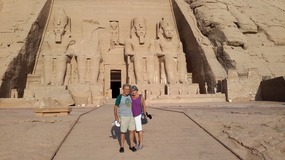
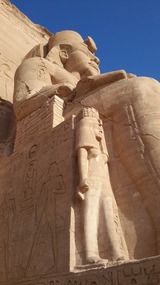







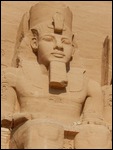
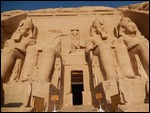

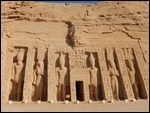




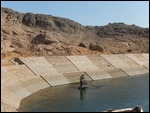

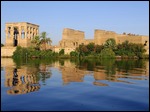

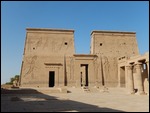





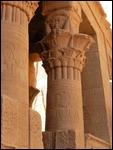
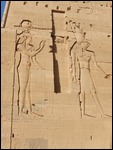
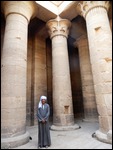

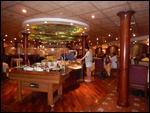

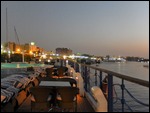

Pastricks
2016-12-02
Trip of a life time. Amazing and so interesting.
barbarabarry
2016-12-02
Wow! You're so good at telling The stories and history. Your photos are spectacular. And your granddaughter is gorgeous. Congratulations yes he does indeed look like a proud papa. So cute!
amanda2-15
2016-12-02
Thanks for the wonderful stories and photos!